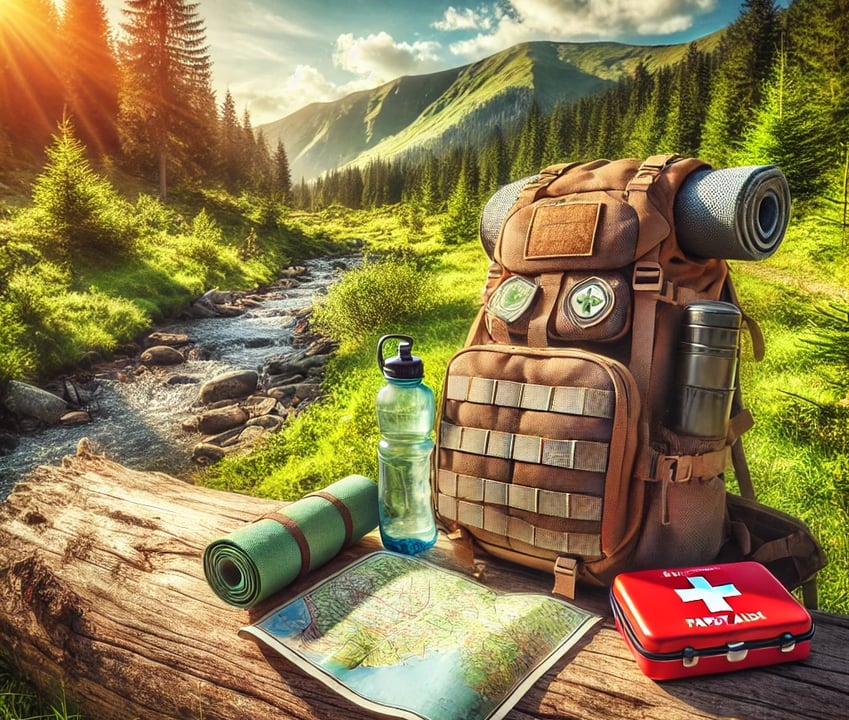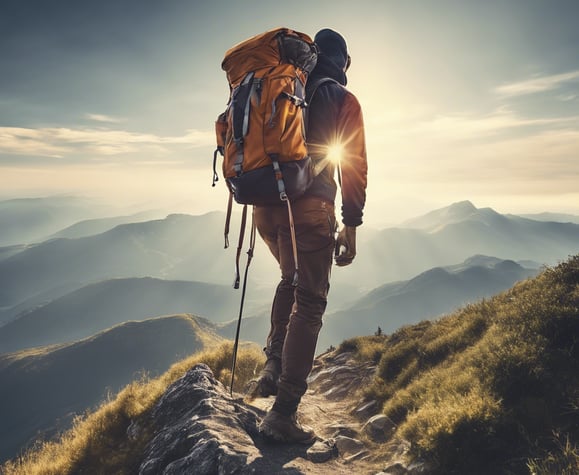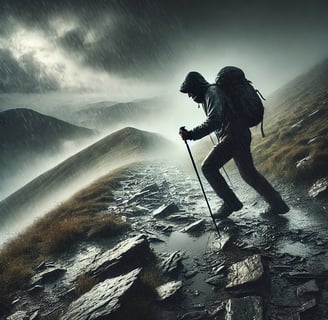The 10 Essentials of Hiking
Discover the 10 Essentials of Hiking and how they can make or break your outdoor adventure! 🌲 Whether you're exploring a local trail or tackling a challenging mountain, being prepared is key to staying safe and enjoying the journey. In this post, we cover the must-have items for every hiker, from navigation tools to emergency shelters, and share practical Do’s and Don’ts based on real trail experiences.
HIKING AND TRAVEL
Jennifer Miller
11/24/20243 min read


The 10 Essentials of Hiking
1. Navigation Tools
Why it’s essential: Getting lost is easier than you think, even on well-marked trails. Navigation tools help you stay on course and find your way back.
What to pack:
A topographic map and a compass (and know how to use them!).
GPS device or smartphone with navigation apps.
Optional: A personal locator beacon (PLB) for emergencies.
Don’t: Rely solely on GPS or your phone for navigation. Devices can fail, run out of battery, or lose signal in remote areas.
Do: Practice using a map and compass before your trip, so you’re ready if technology fails.
2. Headlamp or Flashlight
Why it’s essential: Whether you're caught out after dark or exploring caves, a reliable light source is non-negotiable.
What to pack:
A headlamp or flashlight with extra batteries.
Don’t: Depend on your phone for light. Batteries can die unexpectedly, temperatures can drain them faster, and phones are easy to misplace (trust me, I’ve been there!).
Do: Bring spare batteries for your headlamp and check them before heading out.
3. Sun Protection
Why it’s essential: The sun’s rays can cause burns, damage your eyes, and leave you dehydrated.
What to pack:
Sunglasses, sunscreen, and lip balm with SPF.
A hat or lightweight scarf for shade.
Don’t: Assume you’re safe from UV rays on cloudy days. They can penetrate clouds and cause damage.
Do: Reapply sunscreen regularly, especially if you’re sweating or near water.
4. First Aid Kit
Why it’s essential: Minor injuries can quickly escalate without basic supplies.
What to pack:
Bandages, antiseptic wipes, tweezers, and pain relievers.
Blister treatment like moleskin.
Don’t: Hike without personal medications or assume someone else will have a kit.
Do: Familiarize yourself with basic first aid before hitting the trail.
5. Knife or Multi-Tool
Why it’s essential: A knife is invaluable for food prep, repairs, or emergencies.
What to pack:
A sturdy folding knife or multi-tool.
Don’t: Forget a small repair kit. Duct tape and zip ties can be lifesavers for gear fixes.
Do: Keep your knife clean and sharp for efficiency.
6. Fire Starter
Why it’s essential: A fire can provide warmth, boil water, or signal for help in an emergency.
What to pack:
Matches, a lighter, or a fire starter in a waterproof container.
Don’t: Rely on just one fire-starting method. Matches can get wet, and lighters can fail.
Do: Test your fire-starting materials before your hike, and practice building a fire safely.
7. Emergency Shelter
Why it’s essential: Even on a day hike, unexpected weather or injuries might force an overnight stay.
What to pack:
A lightweight emergency bivy sack or space blanket.
Don’t: Assume you’ll always make it back before nightfall.
Do: Check the weather forecast and pack accordingly.
8. Extra Food
Why it’s essential: Unexpected delays can leave you hungry and without the energy to keep going.
What to pack:
Non-perishable, high-calorie snacks like nuts, jerky, or energy bars.
Don’t: Forget to account for how long food lasts in extreme temperatures.
Do: Pack an extra day’s worth of food, just in case.
9. Extra Water and a Way to Purify It
Why it’s essential: Dehydration can happen quickly, especially in hot or high-altitude environments.
What to pack:
Enough water for your hike and a purification method like a filter, tablets, or UV purifier.
Don’t: Assume water sources on the trail are safe to drink. Even clear streams can harbor harmful bacteria.
Do: Research water sources ahead of time and carry a backup purification method.
10. Appropriate Clothing
Why it’s essential: Weather can change rapidly, especially at higher elevations.
What to pack:
Layered clothing: moisture-wicking base, insulating mid-layer, and waterproof outer layer.
Don’t: Wear cotton, as it retains moisture and can cause hypothermia in cold weather.
Do: Pack gloves, a hat, and an extra pair of socks, even in summer.
Additional Hiking Do’s and Don’ts
Do:
Tell someone your plans, including where you’re going and when you expect to return.
Check trail conditions and weather forecasts before you leave.
Stay on marked trails to protect the environment and avoid getting lost.
Pack out all trash, including biodegradable items like orange peels or food scraps.
Don’t:
Overpack to the point where your gear is too heavy to carry comfortably.
Underestimate the difficulty of a trail or your fitness level.
Approach wildlife—admire from a safe distance.
Forget to enjoy the journey. Hiking isn’t just about the destination!
By following the 10 Essentials and keeping these Do’s and Don’ts in mind, you’ll be well-prepared for any hiking adventure. Being ready for the unexpected not only keeps you safe but also allows you to fully enjoy the beauty and serenity of the trail.



